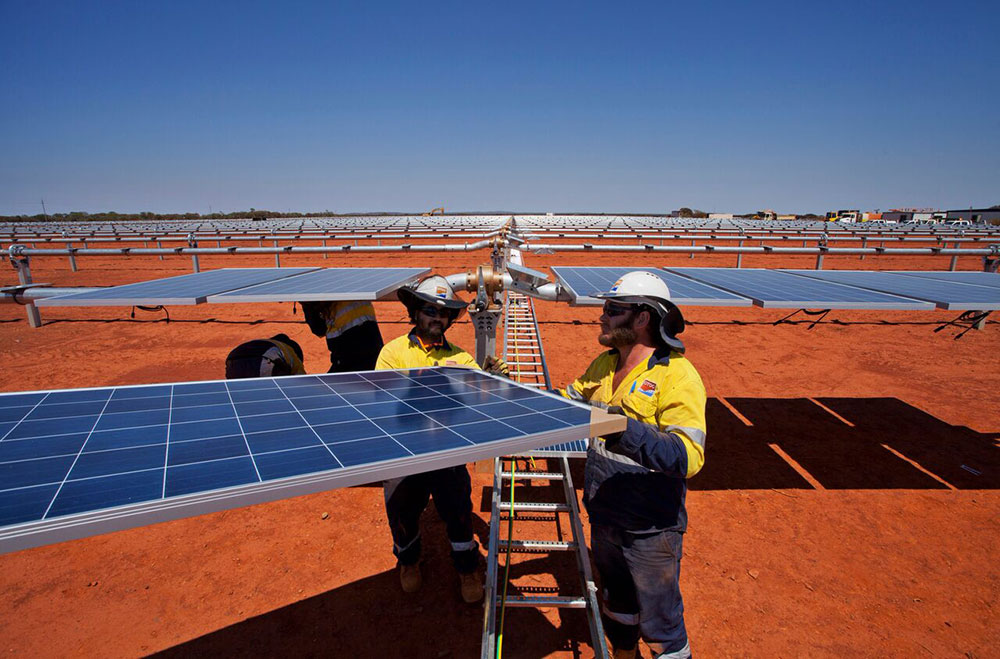There may be life for new PV projects after the RET, and regardless of the NEG – new market analysis has shown. The large scale solar boom in Australia is resulting in striking EPC cost reductions. These, in turn, are making electricity from big solar cheaper than wholesale power prices, potentially providing opportunities for corporate PPAs or other bilateral offtake agreements with large power consumers.
The analysis comes courtesy of global energy analysts Rystad Energy, which acquired Sydney-based Sustainable Energy Research Analytics (SERA) in late 2017.
Rystad has tracked EPC contracts for large scale solar falling from $1.65/W(dc) in early 2017, down to $1.15/W(dc) in a little over twelve months.
“This has had a dramatic impact on breakeven prices – the average price over the lifetime of the asset that is required to recover all costs and make a commercial rate of return,” the analyst observes in its latest Rystad Energy SERA Newsletter.
Investigating the implications of the falling EPC cost for PV project feasibility, Rystad has found that the breakeven has decreased from $96/MWh in January 2017, down to $78/MWh today – for a project located in New South Wales with a “real 10% equity rate”. Rystad has tracked “bottom end” EPC bids for projects beginning construction that would represent a breakeven of $70/MWh it notes.
Improved capital costs could reduce breakeven even lower. Indeed, with a rate of return target of 7.5%, the modelling shows that a breakeven in the low $60/MWh can be achieved in NSW, and sub-$60/MWh further north in Queensland.
“This is a remarkable turn-around in economics for utility-scale solar in Australia,” Rystad notes, “as it becomes increasingly clear that projects in high irradiance areas and with a low cost of capital are cheaper than purchasing electricity on the wholesale market.”
The implications for the utility scale PV market segment in Australia is significant. Despite some dire warnings that the end of the RET, and the decidedly unambitious NEG as it has been proposed, such project economics could result in a pipeline of viable PV power plants with or without significant revenues from Large-scale Renewable Generation Certificates (LRECs).
“While the end of the RET may reduce the incentive for major electricity retailers to procure renewable energy, we expect 2018 to be the year that industrial and commercial users increasingly recognise the benefit of building or procuring renewable energy.”
Rystad forecasts 57 new wind, solar and storage projects will be completed in 2018, with a combined capacity of 3.8 GW. It believes that given the current level of market activity, “pace of development will stay high through 2019.”
This content is protected by copyright and may not be reused. If you want to cooperate with us and would like to reuse some of our content, please contact: editors@pv-magazine.com.









By submitting this form you agree to pv magazine using your data for the purposes of publishing your comment.
Your personal data will only be disclosed or otherwise transmitted to third parties for the purposes of spam filtering or if this is necessary for technical maintenance of the website. Any other transfer to third parties will not take place unless this is justified on the basis of applicable data protection regulations or if pv magazine is legally obliged to do so.
You may revoke this consent at any time with effect for the future, in which case your personal data will be deleted immediately. Otherwise, your data will be deleted if pv magazine has processed your request or the purpose of data storage is fulfilled.
Further information on data privacy can be found in our Data Protection Policy.